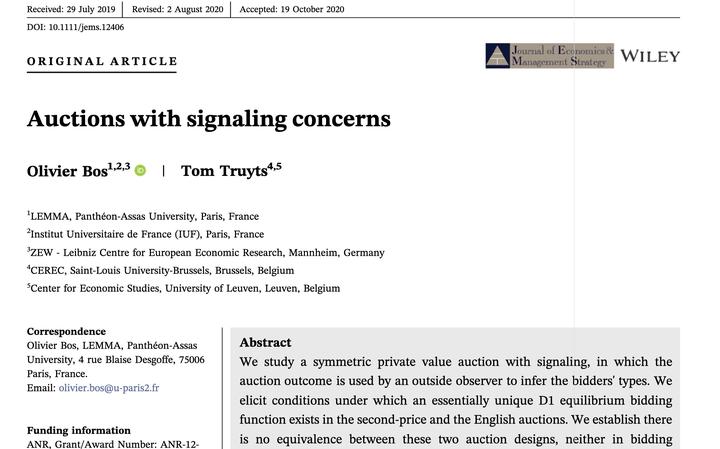
Abstract
We study a symmetric private value auction with signaling, in which the auction outcome is used by an outside observer to infer the bidders' types. We elicit conditions under which an essentially unique D1 equilibrium bidding function exists in the second-price and the English auctions. We establish there is no equivalence between these two auction designs, neither in bidding strategies nor in expected revenue. This is because the presence or the absence of an increasing price clock affects signaling incentives differently in both auction formats, and thereby also the bidders' incentives to overbid their types. This leads to a strictly higher expected revenue in the second-price auction than in the English auction. Our analysis is completed by a comparison with other disclosure policies. Applications include art auctions and charity auctions.